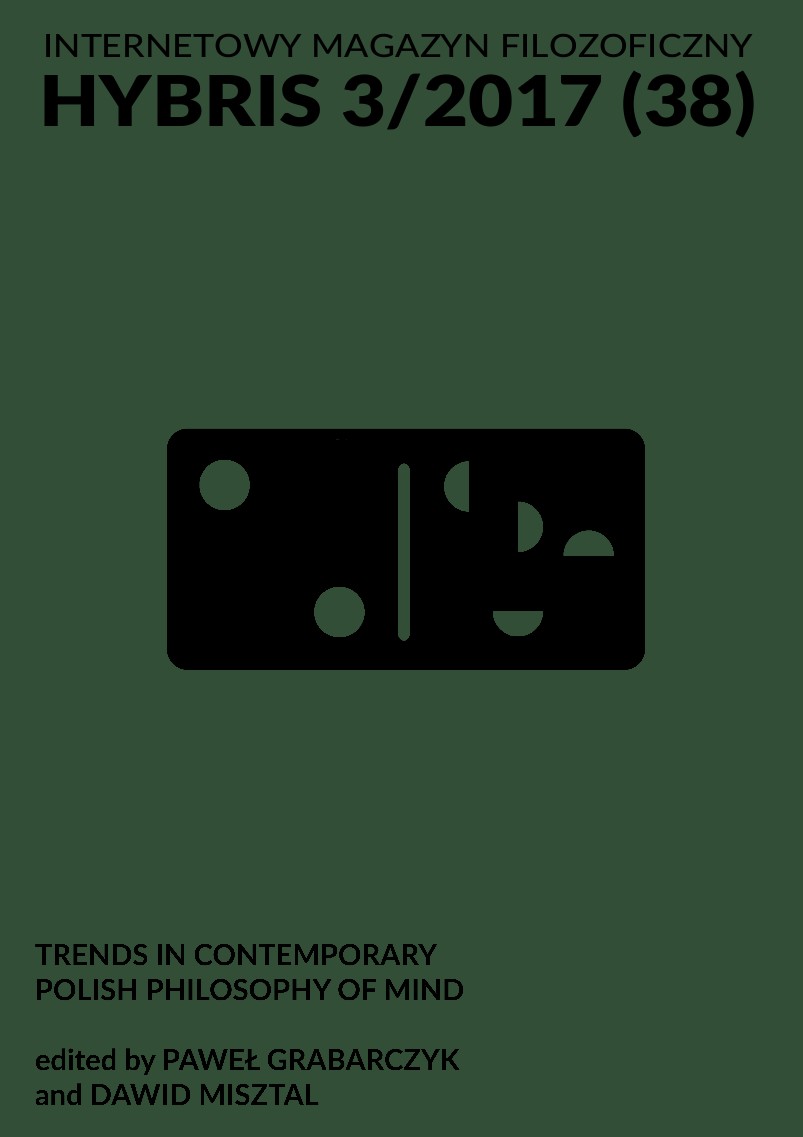What does the sensory apparatus do when there is nothing to perceive? The salience of sensory absence
DOI:
https://doi.org/10.18778/1689-4286.38.04Słowa kluczowe:
embodied predictionism, representation, embodiment, sensory deprivation, absence of sensory stimuli, sensory perceptionAbstrakt
This study aims to bring out the explanatory potential of embodied predictionism versus passive feed-forward model of sensory stimulation in the pursuit of a parsimonious naturalist account of sensation as a salient feature and an end point of conscious experience. Theoretical approaches towards sensory experience are tested against specific scenarios of the absence of observable or palpable qualities including but not limited to the thought-experimental phenomenon of negative synesthesia at the conclusion of the argument. . Predictionism is first explored in its own right only to be found insufficient to do justice to the actual mechanism behind full-blown immediate perception. A case is made for the soundness of predictionism reconciled with the doctrine of embodiment.
Bibliografia
Clark, A. (2015). Embodied Prediction, in: Metzinger, T. & Windt, J.M. (ed.), “Open MIND”.
Zobacz w Google Scholar
DOI: https://doi.org/10.7551/mitpress/10603.003.0022
Lupyan, G. & Clark, A. (2015). Words and the World: Predictive Coding and the Language-Perception-Cognition Interface, Current Directions in Psychological Science, vol 24, no. 4, pp. 279-284.
Zobacz w Google Scholar
DOI: https://doi.org/10.1177/0963721415570732
Hurvich, L. M. (1981). Color Vision. Sunderland, Massachusetts: Sinauer
Zobacz w Google Scholar
Keeley, B. (1999). Fixing content and function in neurobiological systems: the neuroethology of electroreception. Biology and Philosophy 14: 395–430.
Zobacz w Google Scholar
DOI: https://doi.org/10.1023/A:1006594531789
Maruszewski, T. (2001). Psychologia poznawcza. Gdańsk: Gdańskie Wydawnictwo Psychologiczne.
Zobacz w Google Scholar
Sorensen, R. (2008) Hearing Silence: The perception and introspection of absences, Forthcoming in Sounds and Perception: New Philosophical Essays, ed. Matthew Nudds and Casey O’Callaghan, New York: Oxford University Press.
Zobacz w Google Scholar
DOI: https://doi.org/10.1093/acprof:oso/9780199282968.003.0007
Sorensen, Roy (1999). Blanks: Signs of Omission. American Philosophical Quarterly 36/4: 309–321.
Zobacz w Google Scholar
Sorensen, Roy (2007). Seeing Dark Things. New York: Oxford University Press.
Zobacz w Google Scholar
DOI: https://doi.org/10.1093/acprof:oso/9780195326574.001.0001
Tye, M. (2003). Consciousness and Persons. Cambridge, Massachusetts: The MIT Press.
Zobacz w Google Scholar
DOI: https://doi.org/10.7551/mitpress/2109.001.0001
Pobrania
Opublikowane
Jak cytować
Numer
Dział
Licencja

Utwór dostępny jest na licencji Creative Commons Uznanie autorstwa – Użycie niekomercyjne – Bez utworów zależnych 4.0 Międzynarodowe.






